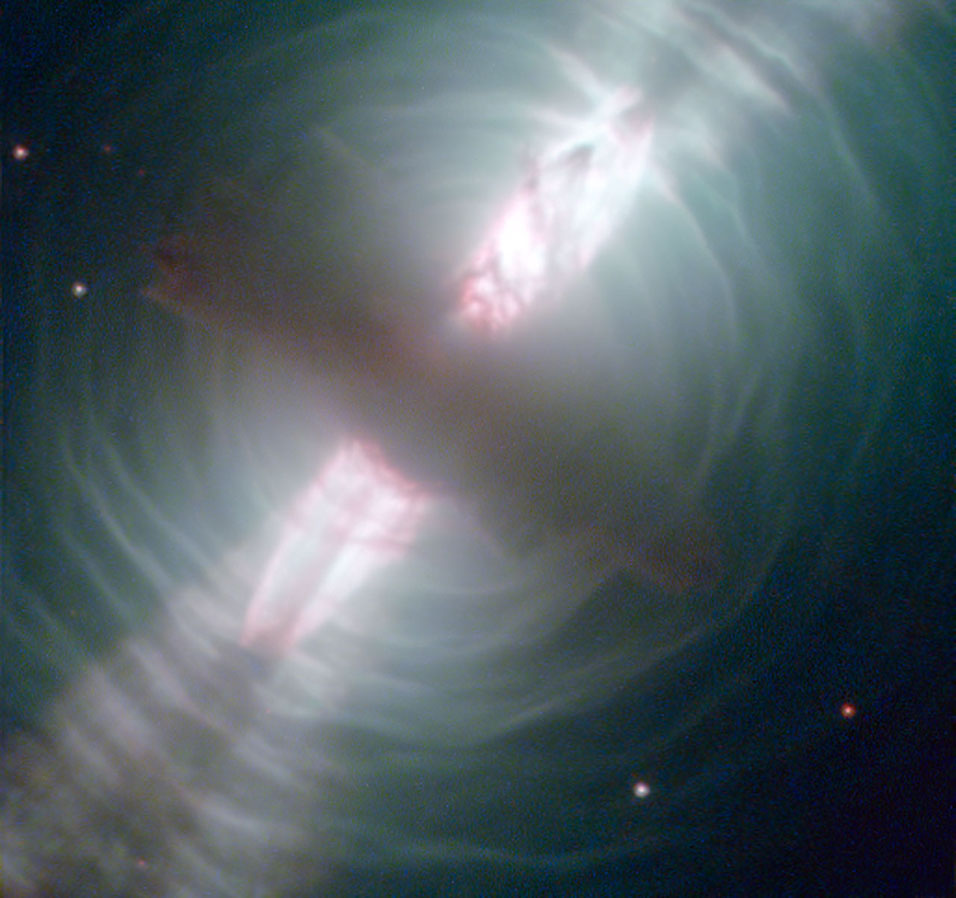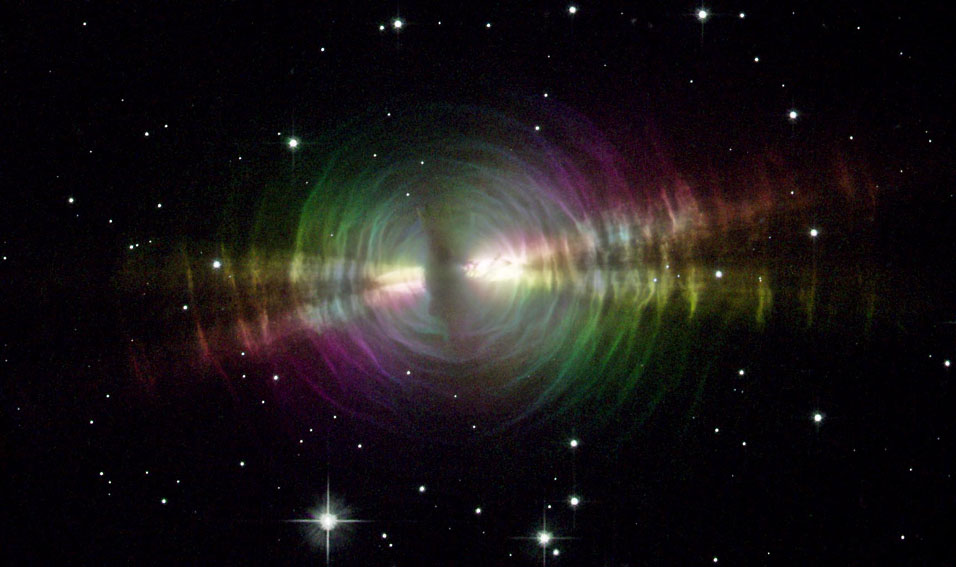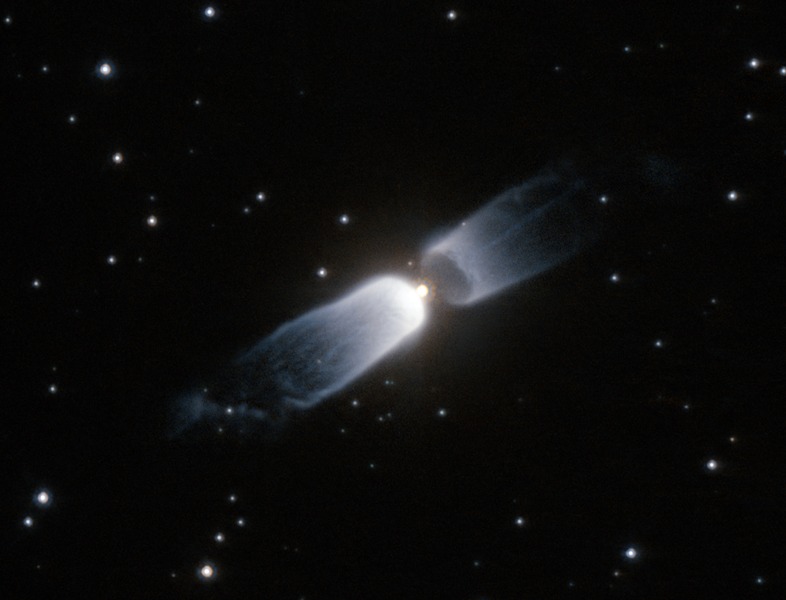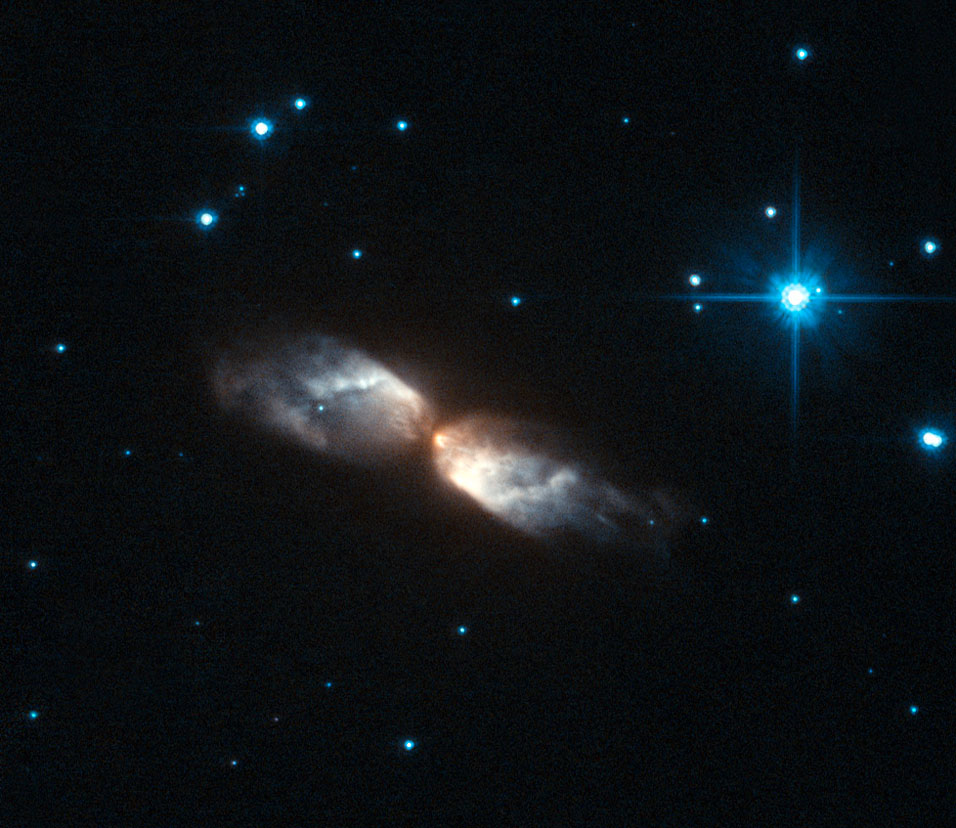Added 1 new A* page:NASA recently posted a new Hubble photo--taken in visible and infrared light--of the Egg Nebula:

image by NASA (source)
The Egg is a star in the "preplanetary or protoplanetary nebula stage," and that is actually an awful name for it because it makes it sound like a young star with a protoplanetary disc, whereas it is actually an old, dying star, perhaps once around the size of the Sun, which exhausted most of its hydrogen fuel, shrunk to a small, hot, helium-burning core that blew the outer hydrogen layers far out to form a huge red giant, possibly with a radius as large as the distance from the Sun to Earth, used up its helium, resumed burning of the remaining parts of the large hydrogen outer shell, and now, having lost maybe 50-70% of its mass, has a very disrupted outer shell which alternates with the inner helium shell in burning, every 10,000 to 100,000 years--this is called "helium shell flash" or "thermal pulse." As part of all these goings on in the dying star, jets and material are being ejected pretty frequently, forming this agitated nebula around the star. In the case of the Egg, the cloud of ejected material around it is so thick we can't see the star itself, but we can see "searchlight" beams from it, perhaps shining through holes in the clouds poked by jets from flashes or pulses. The name "preplanetary/protoplanetary" comes from this being the precursor to the "planetary nebula" stage, where a very extended, ring-like cloud has been pushed far out and heated to a glow by the very hot exposed core of the star that remains.
What with the dying and the cloud of material around them, preplanetary nebulae are quite dim; unlike the later planetary nebula stage, the cooler clouds around the star in the preplanetary stage do not glow on their own, but only reflect light coming out from the central star; the Egg may be within 3,000 light years of Earth--although its exact size and distance is by no means certain, maybe at least partly because so little is known of this phase of stellar life that there isn't much in the way of a "standard candle" with which to compare its luminosity and size, from which you could estimate distance--but it wasn't discovered until 1996 (although the NASA post says "was first spotted less than 40 years ago," so I'm not sure if that means it was spotted in old photos but not identified, or if their number is just a typo) because it's so hard to see.
More preplanetary nebula photos, swiped from Wikipedia:
A Hubble photo of the Egg from 2002, with color filters tinting light vibrating at different angles; the caption notes the material from which it is reflecting is mostly carbon:

image by NASA and The Hubble Heritage Team (STScI/AURA) (source)
Orange and infrared false color Hubble photo of preplanetary nebula IRAS 13208-6020, released in 2011:

image by ESA/Hubble & NASA (source)
Yellow and near-infrared false color Hubble photo of preplanetary nebula IRAS 20068+4051, released in 2010:

image by ESA/Hubble & NASA (source)
~~~~~~~
This space.com article describes an interesting observational experiment that will be run with Hubble next month, when Venus will pass between Earth and the Sun: sunlight coming to us through the clouds around the rim of Venus will carry spectral data revealing elements of the Venusian atmosphere; Hubble is far too light-sensitive to survive being aimed directly at the Sun, though, so instead it will be aimed at a fixed point on the Moon for the full seven hours of Venus' solar transit, and will be trying to pick out the tiny, tiny Venusian light components among the regular sunlight reflecting off the bright lunar surface: "...they're looking for extremely faint spectral signatures. Only 0.001 percent of the sun's light will filter through Venus's thick atmosphere and be reflected off the moon..."
Pretty wild. And this isn't even being done really to learn about Venus' atmosphere, which is already pretty well known--the US and especially the Soviets have landed unmanned spacecraft on the planet, after all (interesting note: 1982's Soviet "Venera 14" Venus lander missed its chance at a soil sample because its probe, striking for the soil, was blocked by its own ejected camera lens cap, which happened to lay exactly where the probe tried to strike). So this elaborate lunar mirror experiment is being done as a test of the quality of data gathered from sunlight filtered through planetary atmospheres--they'll compare the results with what's already known about Venus' atmosphere to see if the readings are good--in the hopes that it can later be applied to detect the atmospheric content of planets around other stars: one main method of detecting planets around other stars is to spot a regular periodic dimming of the star's light caused--in theory--by one of its planets moving between it and us, so I guess the idea is that maybe we could also get useful spectral data about the atmosphere of the planet from that dimmed light.
~~~~~~~~
I came across another comic with interesting art! This one is (warning: mature language and themes) The Ballad of Frank Sartre, and the best description I can come up with is that it's kind of like an ultra-noir "Who Framed Roger Rabbit" with intensely brushy black and white artwork.
|
